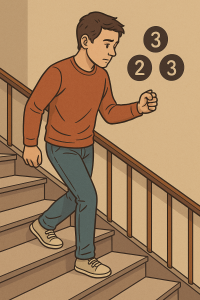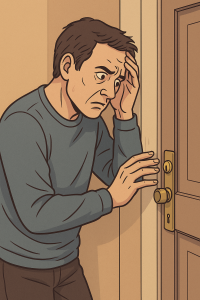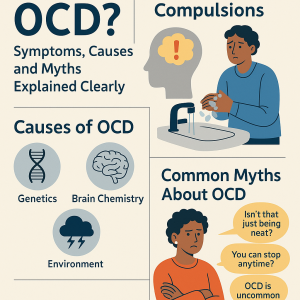Mindfulness and Meditation for OCD Relief: A Powerful Path to Inner Peace
Mindfulness and Meditation for OCD Relief can help you manage intrusive thoughts, reduce anxiety, and regain a sense of control. This guide shares science-backed insights and practical tools you can start using today.
Understanding OCD: The Battle Within the Mind
What is Obsessive-Compulsive Disorder (OCD)?
Obsessive-Compulsive Disorder (OCD) is a mental health condition marked by unwanted, intrusive thoughts (obsessions) and repetitive behaviors (compulsions) performed to reduce the anxiety those thoughts create. People living with OCD often feel caught in a loop of distress and temporary relief that can disrupt work, school, relationships, and daily routines.
Common Symptoms and Triggers of OCD
- Excessive fear of contamination or germs.
- Repeated checking (locks, appliances, taps).
- Intrusive taboo thoughts (about harm, sexuality, morality).
- Mental rituals such as counting, praying, or repeating phrases.
Triggers vary by person and may include stress, transitions, or specific environments. Noticing your patterns is a key first step toward personalized care.
The Role of Anxiety and Compulsion in OCD Patterns
Anxiety fuels the obsessive–compulsive cycle. The brain flags a threat, intrusive thoughts surge, anxiety rises, and a compulsion offers short-term relief. Unfortunately, that relief teaches the brain that the obsession was dangerous, reinforcing the loop.
The Science Behind Mindfulness and Meditation
How Mindfulness Works on the Brain
Mindfulness strengthens present-moment awareness and reduces over-engagement with the brain’s rumination hub, the default mode network (DMN). With practice, you become better at noticing thoughts without getting swept away by them—vital for anyone managing intrusive thoughts.
Meditation as a Cognitive Reset for Intrusive Thoughts
Regular meditation trains attention and emotion regulation systems in the prefrontal cortex while easing reactivity in the amygdala, the brain’s fear center. This “reset” makes it easier to refrain from compulsions when obsessions arise.
Neuroplasticity and the Power of Focused Awareness
The brain can rewire itself through repeated practice. Over time, mindful attention reshapes networks related to attention control, emotional balance, and self-awareness, leading to less intense intrusive thoughts and more flexible responses.
Why Mindfulness and Meditation Help in OCD Relief
Breaking the Cycle of Obsessions and Compulsions
Mindfulness interrupts the knee-jerk leap from obsession to compulsion. Instead of reacting, you learn to pause, feel the urge, and choose a response aligned with your values.
Training the Mind to Observe Rather than React
The heart of mindfulness is simple: notice and allow. By labeling a thought—“worrying,” “planning,” “judging”—you create space between the thought and your action.
The Role of Non-Judgmental Awareness in Healing
Self-compassion softens the intensity of intrusive thoughts. When you let go of the “good/bad” labels and meet your experience with kindness, the nervous system settles and the urge to ritualize wanes.
Practical Mindfulness Techniques for OCD Relief
Mindful Breathing: Grounding in the Present Moment
Try a 4-2-6 breath: inhale through the nose for 4 counts, hold for 2, exhale for 6. Repeat for 2–5 minutes. Longer exhales cue the parasympathetic “rest and digest” response.
The 5-4-3-2-1 Grounding Technique
- Name 5 things you can see.
- Name 4 things you can touch.
- Name 3 things you can hear.
- Name 2 things you can smell.
- Name 1 thing you can taste.
This sensory reset anchors attention in the here and now, loosening OCD’s grip.
Body Scan Meditation for Reducing Anxiety
Lie down or sit comfortably. Move attention from toes to crown, noting sensations with curiosity. Where you find tension, breathe into the area and release on the exhale. A 10–20 minute scan builds interoceptive awareness and early detection of stress signals.
Labeling Thoughts Without Attachment
When an intrusive thought pops up, silently tag it: “thinking,” “catastrophizing,” or “urge.” Then, return to the breath. Labeling defuses the thought’s power without suppressing it.
Daily Meditation Practices for Long-Term OCD Management
Morning Meditation Routine for Calm Focus
Begin with 5–10 minutes of mindful breathing. Add a brief intention such as, “Today I’ll meet urges with patience.” Even a short session sets a steady tone for the day.
Evening Reflection and Gratitude Practice
Before bed, note one moment you observed a thought without reacting. Write down three small gratitudes. This primes the brain to notice progress and cultivates resilience.
Using Guided Meditation Apps and Tools
Apps like Headspace, Calm, and Insight Timer offer guided tracks for anxiety, OCD, and sleep. Treat them as training wheels—useful for structure and consistency.
Combining Mindfulness with Professional OCD Treatments
Mindfulness-Based Cognitive Therapy (MBCT)
MBCT blends cognitive strategies with mindfulness, helping you spot unhelpful thinking patterns and disengage from them. It’s especially helpful for reducing rumination and relapse risk.
Exposure and Response Prevention (ERP) with Meditation Support
ERP—the gold standard for OCD—asks you to face triggers while resisting compulsions. Mindfulness supports ERP by increasing distress tolerance and decreasing ritualizing during exposures.
The Importance of a Holistic Approach
For many people, the best plan combines therapy, lifestyle skills, and sometimes medication. Mindfulness and Meditation for OCD Relief work as powerful companions, not replacements, for professional care.
Real-Life Success Stories and Clinical Evidence
Research Studies on Meditation and OCD Relief
Clinical research on mindfulness-based interventions shows meaningful symptom reductions for OCD, particularly in distress and thought-action fusion. While study designs vary, the trend is clear: consistent, guided practice helps many people respond more flexibly to obsessions.
Personal Stories of Transformation Through Mindfulness
Countless first-person accounts describe moving from feeling trapped by rituals to living more freely. Common themes include learning to surf urges, shortening ritual time, and reclaiming attention for valued activities.
For more resources, visit the International OCD Foundation.
Common Challenges in Practicing Mindfulness for OCD
Overcoming Resistance and Intrusive Thoughts During Meditation
If sitting still spikes intrusive thoughts, shorten sessions or try walking meditation. The goal isn’t silence; it’s a kinder relationship with whatever appears.
Dealing with Perfectionism in Mindfulness Practice
“Meditating perfectly” is another trap. Progress is measured by returning, not by never getting distracted. Each return is a rep that builds attention strength.
Staying Consistent with Daily Practice
Attach practice to an existing habit: after brushing teeth, before opening email, or right after lunch. Start with 3–5 minutes, then slowly extend once it feels automatic.
FAQs About Mindfulness and Meditation for OCD Relief
- 1) Can mindfulness cure OCD completely?
- No. It can’t “erase” OCD, but it can greatly reduce symptoms and strengthen your ability to choose responses that fit your values.
- 2) How long before I notice results?
- Many people feel subtle benefits within 4–8 weeks, especially when practicing most days.
- 3) Is meditation safe for everyone with OCD?
- Generally yes, but those with severe intrusive thoughts may benefit from working with a therapist to avoid turning meditation into a ritual.
- 4) Can mindfulness replace medication?
- It’s a complement, not a substitute. Always discuss medication changes with a clinician.
- 5) Which type of meditation works best for OCD?
- Mindfulness meditation and loving-kindness (compassion) training have strong practical benefits, especially alongside ERP.
- 6) How often should I meditate for OCD relief?
- Target 10–20 minutes daily. Consistency beats occasional long sessions.
Conclusion: Reclaiming Freedom Through Mindful Awareness
Mindfulness and Meditation for OCD Relief provide a compassionate, evidence-informed path to healing. While OCD may not vanish entirely, these practices teach you to meet intrusive thoughts with curiosity, reduce compulsions, and live more fully in the present. With steady practice—and support from therapies like ERP and MBCT—you can build a life guided by values instead of fear.


